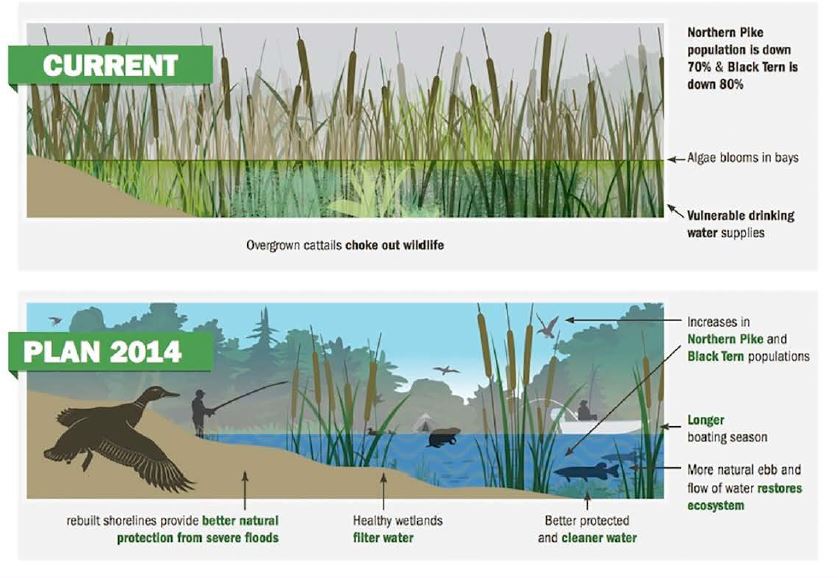Heal 50 years of manmade damage to the largest freshwater body on Earth. Restore 64,000 acres of wetlands. Add $12 million to the New York State economy annually. Obtain unprecedented bipartisan support from diverse stakeholders, including New York towns and counties, outdoor and environmental agencies, businesses, national and international policy makers and elected officials, and landowners.
Sound like mission impossible? A lesser environmental organization might have balked at the overwhelming challenge. The Nature Conservancy (TNC) instead saw an opportunity to make an important impact with Plan 2014, a new and improved water management plan for the Lake Ontario and St. Lawrence River watersheds.

Plan 2014 intends to heal the watershed by slightly altering the flow of the water from the Moses Saunders Dam to return it to a more natural flow. On the surface, slightly changing the water flow may seem like a quick and easy fix. However, an interview with Jim Howe, longstanding Director of the Central and Western New York Chapter of TNC, reveals the intricacies of the project.
To get a sense of the scope of the project I asked Director Howe about the stakeholders involved. His response was a long list of entities, both national and international, who originally had different stances about the proposal. These included:
- Local People
- Environmental Community
- Ducks Unlimited
- Hunters
- Anglers
- Trappers
- Municipalities
- Home Owners
- Shoreline Property Owners
- Commercial Shipping
- NYS Officials
- Members of Congress
- Federal Agencies
- Legislatures
According to Howe, the project was a controversial one. It was often heavily publicly criticized by land owners and legislatures with unsubstantiated fears of property flooding and tax increases.
As an experienced environmental leader, Howe also shared some insights into how he helped steer the project through the controversy surrounding it. Being on the receiving end of a lot of the public negativity, Howe explained that one of the challenges for a good leader is to always reassess a situation and make sure that the end goal is still worth all of the flack it might be receiving. Especially for Plan 2014, where so much time, effort, and resources were invested, Howe says he was constantly reassessing, readjusting, and ultimately reaffirming that the difficulties they were experiencing were worth it.
Howe also had three other pieces of wisdom for a leader in his position:
Know when to ask for help. Due to all the criticism, Howe found himself and his team struggling to get approval for Plan 2014. He recognized that the project’s opponents had a clear, unified voice that was drowning out TNC’s message. Howe made the call to hire a communications firm to help get his team on the same page and spread the same message and counterpoints to the criticism. This made a huge impact on the approval of the project and ended up being a turning point in their favor.

Be a good listener. Howe quoted a New York Times interview with Lynn Good, the Chief Executive of Duke Energy: “…it’s no longer about whether you are the smartest subject-matter expert in the room. It’s whether you can be effective in leading a diverse team.” Howe elaborated on this quote by stating that the job of a leader is to listen to all of the opinions in the room, and make sure every opinion is heard. Promoting an open atmosphere is key.
It’s not a popularity contest. You can’t always please everyone on your team. As a leader, you have to make decisions that align the most with your organization’s mission and vision. This can sometimes mean making an unpopular decision that some team members may not like.
Thanks to strong environmental leaders like Howe, Plan 2014 was finally approved in December of 2016. Howe hopes that this project will generate the impressive changes previously mentioned, as well as a healthier lake, wetlands, and shoreline in general. His biggest hope is that it will create citizens who understand the link between a healthy lake and a prosperous city.


Millions of dollars of damage later … this document should be used as evidence to hold someone accountable in a Class Action Law Suit !